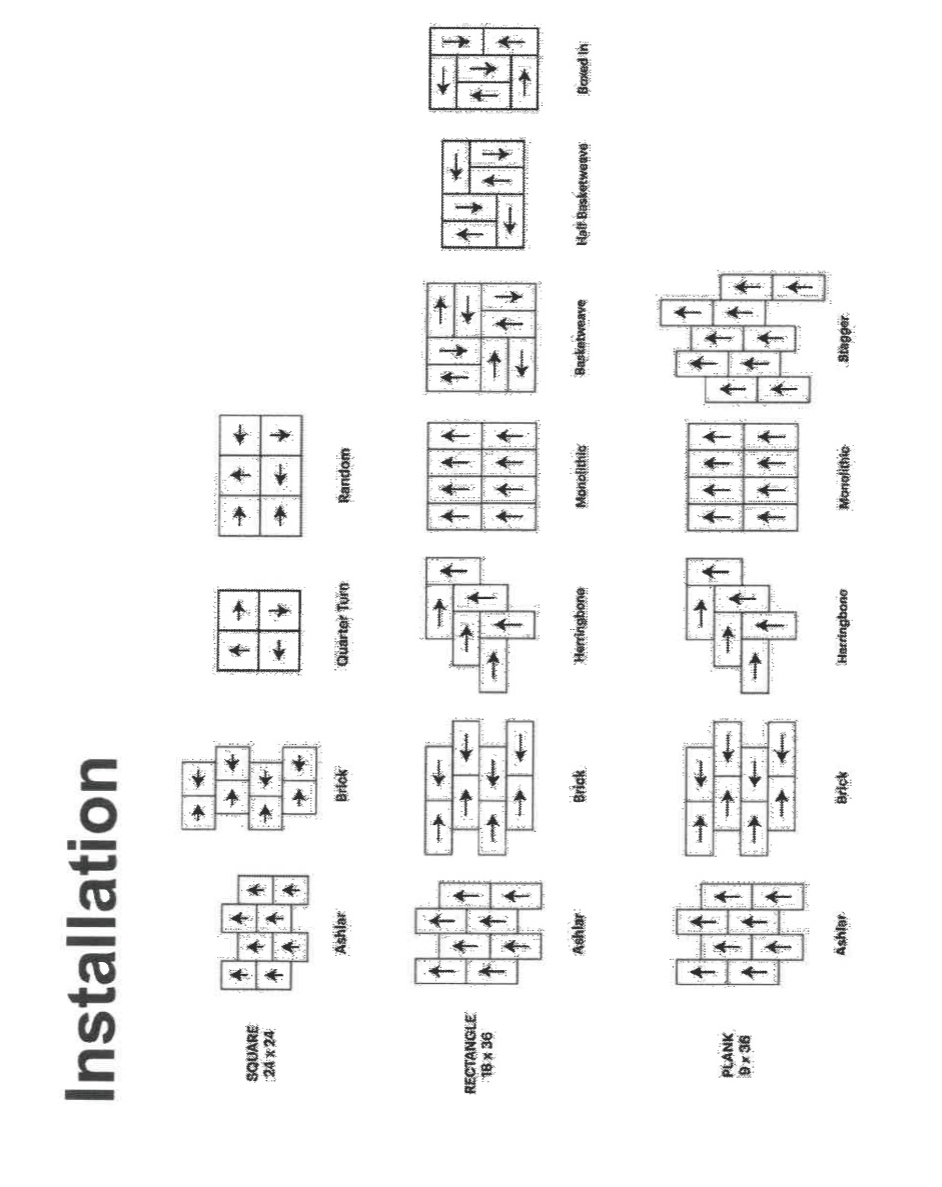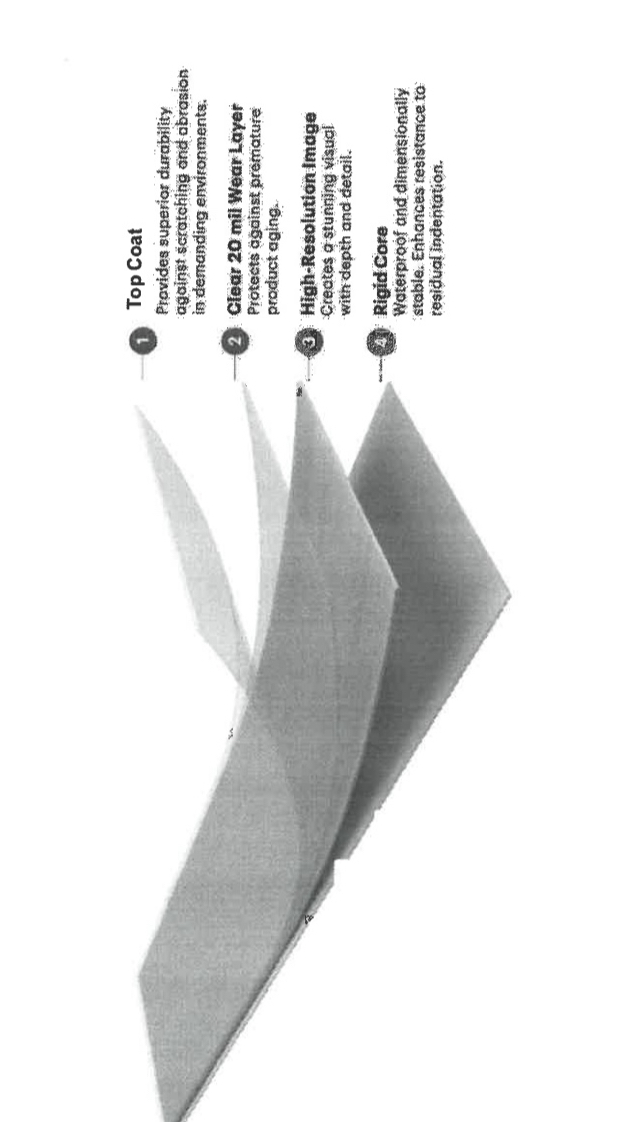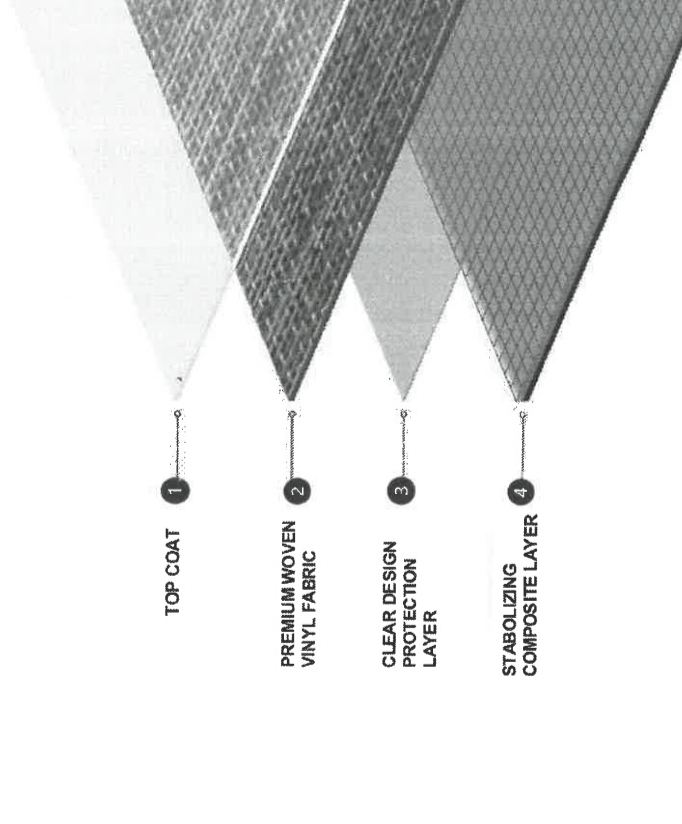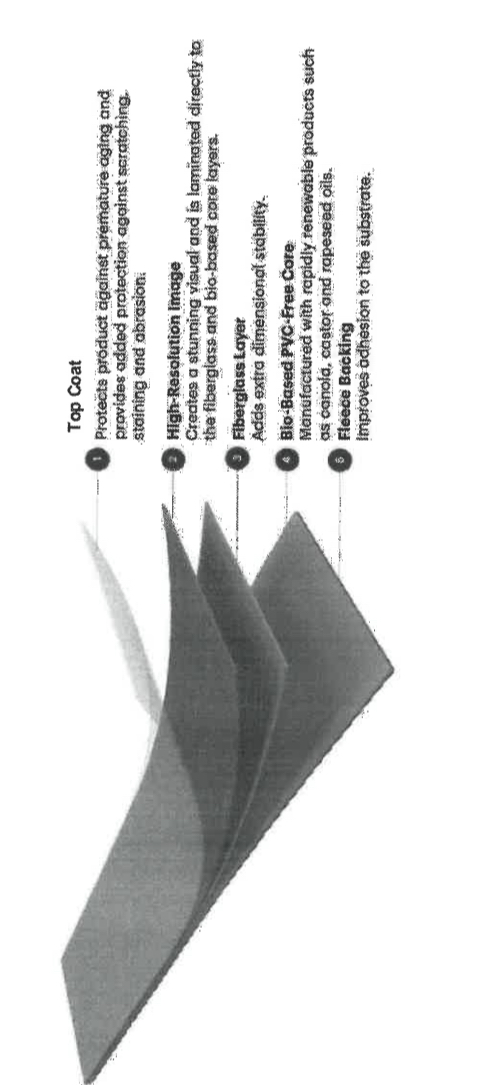shaw resilient flooring
1/10
There's no tags or description
Looks like no tags are added yet.
Name | Mastery | Learn | Test | Matching | Spaced |
|---|
No study sessions yet.
11 Terms
8 factors of performance
Topcoat- protect the flooring against scratches, stains, and scuffing
Gloss - impacts perception of scratches (higher the gloss, show more scratches)
Emboss- applied to the surface of the flooring product
Wear layer- protective layer above the print film that can come in different thicknesses
Print film- is the layer the visual is printed on, through rotogravure or digital
Color- hide scratches but show more soil, dark colors hide scuffing but show scratches, usage of the space
Core construction - give the platform more thickness, add height, provides dimensional stability
Installation and maintenance - check before install
Installation, keys, drawings
Before product
checking the slab for moisture conditions can prevent lifting of planks and adhesive failure
Uneven subfloor can telegraph through some product
Sephora really needs to be completlymlevel
Installing on top of old products can also cause imperfections to show through the new resilient products
Before installation
proper transition or minimizing transition can affect the user experience, and can minimize the risk of trip and fall
Keys
include any installation, diagrams, or key for subtracter to install is complicated
Ensure the design is installed, how it is supposed to be
More efficient

Factors to consider on a project
scope
Budget
Usage
Aesthetic
Timeline
Sustainability
Maintenance - how often will product be cleaned, what’s the clients current space?, our employees eating or drinking in the space, important to manage the clients expectations
Important to the end user
Same answer for the other slide
Benefits of resilient flooring
Durable
Cost effective
Easy to maintain and install
Aesthetic
LVT
Luxury vinyl tile
Top 8 layers
rigid core
Types
Spec/xrc (solid polymer composite)
Mineral core (mineral composition)
Benefits
helps uneven, subfloors, and telegraphing
Performs with high static and rolling loads when glued down
Water resistant from top to down
Does not have to acclimate

Woven resilience
performance of an LVT, with a visual of a textile
Performs in environments with heavy static and heavy, rolling loads
Some manufacturers add a topcoat to seal the woven and keep dirt out
Direct glue insulation

Bio-based
cost more than traditional LVT
Cannot be polished
Manufactured wood rapidly, renewable products, such as canola, castor, and rapeseed oils
Available in sheet or plank
Heterogeneous construction

Sheet goods
Homogenous
uniformed structure- through body
6’7” wide
95% is heat welded
Can be cover to create barrier against moisture and fluids
Most durable type of resilient for punctures in cuts
Heterogeneous
made up layer
Can be covered
Lots of options
Heated welding
Welding chemical
also called cold welding
Uses a solvent to merge two pieces of resilient sheet goods together
Does not create as much as a full seal as
Heat welding
continuous flooring surface is created by a mechanical bond in the seam
Uses he in bed rods made of the same material as a sheet to bond to seams
Welded floors are the most aspect in the only impervious floors
Flash cove
she good is extend it to go up the bottom of the wall
Create a more sternal environment, perfect for spaces where clean this is critical
Other resilient flooring: VCT, Linoleum, Rubber flooring
VCT (vinyl composite tile)
limited visual + product sizes
Maintenance intensive
Homogeneous product with a true true pattern
PVC chips, limestone, and other fillers
Linoleum
PVC free
Limited visuals
Sensitive to UV exposure
Poor stain resistance
Cleaning choices are limited
Rubber
PVC free
Durable and has good slippers resistance
Limited visual
Made from synthetic rubber (not a renewable material)
Subject to fading and colorfast issues